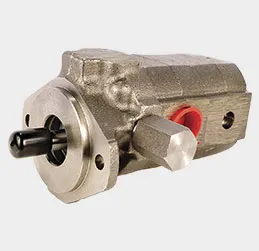Exploring Casting Techniques and Part Design for Enhanced Manufacturing Efficiency
Casting and Part Design A Match Made in Engineering
In the realm of manufacturing and engineering, the interplay between casting and part design plays a pivotal role in determining the functionality, efficiency, and cost-effectiveness of the final product. Casting, a process that involves pouring molten material into a mold to create a specific shape, is often chosen for producing complex geometries that would be challenging or impossible with traditional machining methods. However, the success of casting heavily relies on the thoughtful design of the parts being produced. This article explores the significance of casting in part design, the challenges associated with it, and best practices to optimize manufacturing outcomes.
Understanding Casting
Casting processes can be divided into several categories including sand casting, investment casting, die casting, and more, each suited for different materials and production scales. The choice of the casting method often depends on factors such as the required tolerances, surface finish, and the physical properties of the material. Common materials used in casting include metals such as aluminum, steel, and bronze, as well as non-metals like plastics and ceramics.
The advantages of casting as a manufacturing process are numerous. It allows for the creation of parts with intricate shapes, reduces material waste, and can be performed on a large scale with relatively low labor costs. However, to fully leverage these benefits, engineers must meticulously consider part design with respect to the casting technique being employed.
The Importance of Part Design in Casting
Part design is crucial in determining how efficiently and effectively a component can be produced through casting. Poorly designed parts may lead to defects such as porosity, warping, or incomplete filling of the mold, all of which can compromise the integrity and performance of the final product.
When designing cast components, engineers must consider both the geometric and physical attributes of the part. Features such as ribs, fillets, and draft angles can significantly influence the ease of manufacturing and the mechanical properties of the finished product. A well-designed part not only enhances manufacturability but also contributes to material savings and improved strength characteristics.
Challenges in Casting and Part Design
casting part design

Despite the advantages of casting, several challenges arise that engineers must navigate. One significant issue is the thermal contraction of materials, which occurs as they cool. If not accounted for in the design phase, this can lead to dimensional inaccuracies or internal stresses, resulting in part failure.
Additionally, issues related to the flow of molten material can lead to defects. For example, if a design contains intricate cavities or sharp corners, it might be difficult for the molten metal to fill the cavity completely, resulting in incomplete solidification. Therefore, flow analysis and simulation software can be invaluable tools in predicting potential issues and optimizing the design accordingly.
Best Practices for Effective Casting and Part Design
1. Collaborative Design Collaboration between design engineers and manufacturing teams is essential. By involving foundry experts early in the design process, potential challenges can be identified and addressed proactively.
2. Simulations and Prototyping Employing advanced simulation tools allows engineers to predict flow patterns, cooling rates, and the final structural integrity of the part before physical production. Rapid prototyping, through techniques like 3D printing, can also help validate designs.
3. Material Selection Understanding the material's properties and appropriate casting method is vital. Materials can behave differently under various conditions, and selecting the right one can optimize performance while reducing production costs.
4. Incorporating Design for Manufacturability (DFM) Principles DFM approaches emphasize simplicity in design, reducing complexity and potential error sources in the casting process.
Conclusion
In conclusion, the synergy between casting and part design is fundamental to the success of the manufacturing process. By emphasizing collaborative design, utilizing advanced simulations, and adhering to best practices, engineers can create cast parts that not only meet performance specifications but also enhance manufacturing efficiency. As technology advances and new materials emerge, the potential for innovative casting techniques and improved part designs will only continue to grow, fostering a new era of engineering excellence.
-
Crawler Drilling Rig - Baoding Hairun|Confined Space Drilling&Mine SafetyNewsAug.15,2025
-
Drill For Confined Spaces-Crawler Mounted Drill Rig | Crawler Drill Rig for SaleNewsAug.15,2025
-
Premium OEM Auto Parts & Stamping - Reliable ManufacturersNewsAug.15,2025
-
Crawler Drilling Rig for Confined Spaces-Baoding Hairun MachineryNewsAug.15,2025
-
Drill For Confined Spaces - Baoding Hairun Machinery And Equipment Trading Co., Ltd.NewsAug.15,2025
-
Advanced Crawler Drilling Rig - Baoding Hairun Machinery | Underground Mining SolutionsNewsAug.14,2025















